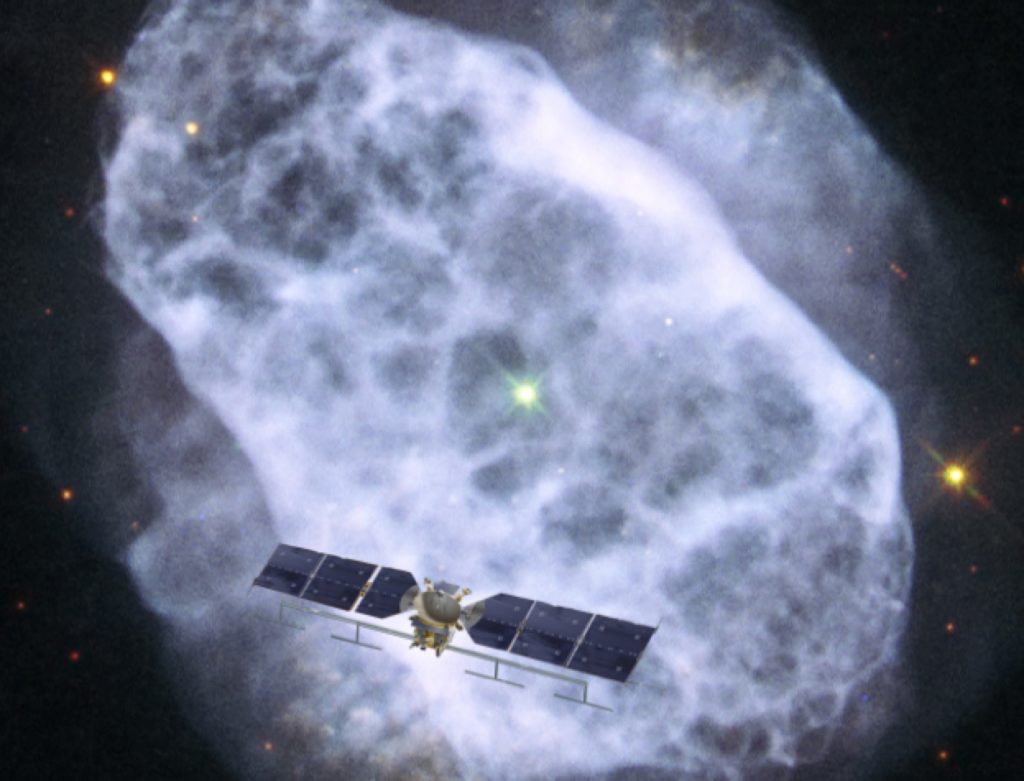
Clay F. Johnson
Frozen Starlight
This is Major Tom to Ground Control
I’m stepping through the door
And I’m floating in a most peculiar way
And the stars look very different today
—David Bowie, “Space Oddity”
Floating above, far above,
Beyond the moon, the stars,
The system of dust and black―
Black but with silver-sapphire―
Where all is empty and dark,
A lonely dark, floating
Lost and silent among
The beauty of nothingness
The reflection in my star-mirrored eyes
Paints a picture of light-illusioned lies
The nearest star is now dead—
A nebula-cloud of white
Opal—crystalized, frosted
With a luminous glow like
Gossamer wisps in moonlight,
As if a long-forgotten
Spider waits impatiently
In the cold and lonely dark
From my scope it appears as frozen snow
From Earth we saw a star of pale white glow
The planetary system,
The last and only hope,
Is now nothing but faery-
Swirls of glittering stardust,
Shadowy trails of white gems,
Pale luminescent pearls
Reflecting deep sapphires
And jade-opals of lucent green
A month has passed in space-time―
The feel and slow demise of
Long-forgotten memories―
Yet, back on Earth, fast-aging,
Time has taken centuries,
Stealing unremembered years
From the ageless star-finder
Unable to return home
Ten months more I’ll yield to this endless night
Consumed by a cloud of frozen starlight
But nothing waits for me
In the lonely dark, nothing
Watches me in the silent
Nothingness of empty space―
Nothing but the spectral gaze
Of shards from a dead star,
Dead like all my memories,
And dead like my cold circuits.
_______________
Clay F. Johnson is an amateur pianist, devoted animal lover, and incorrigible reader of Gothic literature and Romantic-era poetry. Among other publications, one of his darker poems was selected among the Top 3 in the 2017 edition of the Horror Writers Association’s Poetry Showcase. That same poem—along with another—was recently nominated for a Rhysling Award by the Science Fiction & Fantasy Poetry Association. Find out more on his blog at http://clayfjohnson.blogspot.com/, on his website at www.clayfjohnson.com, or follow him on Twitter @ClayFJohnson.
Editor’s Notes: This form poem has 7-syllable lines and is about a robot and space exploration. The NASA/ESA Hubble Space Telescope image shows a planetary nebula named NGC 6153, located about 4,000 light-years away in the southern constellation of Scorpius (The Scorpion). The faint blue haze across the frame shows what remains of a star like the sun after it has depleted most of its fuel. When this happens, the outer layers of the star are ejected, and get excited and ionized by the energetic ultraviolet light emitted by the bright hot core of the star, forming the nebula. NGC 6153 is a planetary nebula that is elliptical in shape, with an extremely rich network of loops and filaments, shown clearly in this Hubble image. However, this is not what makes this planetary nebula so interesting for astronomers. Measurements show that NGC 6153 contains large amounts of neon, argon, oxygen, carbon and chlorine — up to three times more than can be found in the solar system. The nebula contains a whopping five times more nitrogen than our sun! Although it may be that the star developed higher levels of these elements as it grew and evolved, it is more likely that the star originally formed from a cloud of material that already contained a lot more of these elements. Text credit: European Space Agency Image credit: ESA/Hubble & NASA, Acknowledgement: Matej Novak. On the nebula, an image of the Europa Clipper Space probe from the Europa Lander Planetary flyby (Jupiter) is superimposed.
